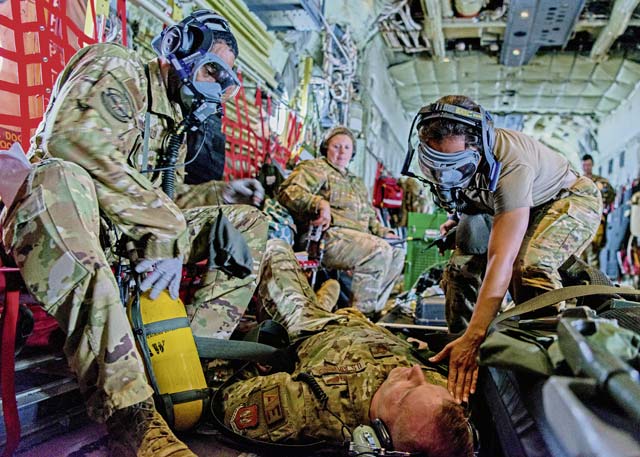
Partnered with units from the Royal Netherlands Air Force, German army and Belgian forces, the ACE IOC tested the 86th AW Airmen’s capability to respond in the event of rapidly emerging contingencies by operating from locations with varying levels of capacity and support.
Globally, threats and operational environments are constantly evolving.
“We are hoping to gain the ability to operate tactically from anywhere, in any environment, with any level of technology,” said Capt. Samuel McKinnley, 37th Airlift Squadron C-130J Super Hercules pilot.
During the exercise, Airmen confirmed the ability to load and offload cargo, air-drops, establish communications with units in geographically separate locations and employ emergency medical evacuation procedures with limited equipment while using as little of the local base’s resources as possible.
The ACE concept is designed to validate new ways to deploy and maneuver assets across the European theater to seize, retain and exploit the initiative against adversary aggression in any environment.
“It offers a bottom-up initiative where the protocol starts at the unit level and provides a closer look at the problem,” said Capt. Joshua Mote, 37th AS/86th Operations Group Starlink ACE representative. “It gives the unit the freedom and resources to innovate.”
European partners form the backbone of U.S. Air Forces Europe-Air Forces Africa. Without that partnership, the ability to deter, defend and win is degraded. RNLAF airmen were essential in mission planning of air drops over Belgium.
“The Dutch have been extremely accommodating of us, and helpful throughout the whole process,” McKinnley said. “They have their own abilities that are extremely agile, and by integrating with them, we’re both learning together.”
Upon completion of ACE IOC, the 86th AW is the second wing USAFE-AFAFRICA to execute their initial operating capabilities capstone, ensure personnel resiliency and operational capability, as well as deter and safeguard the European theater from adversarial threats.


